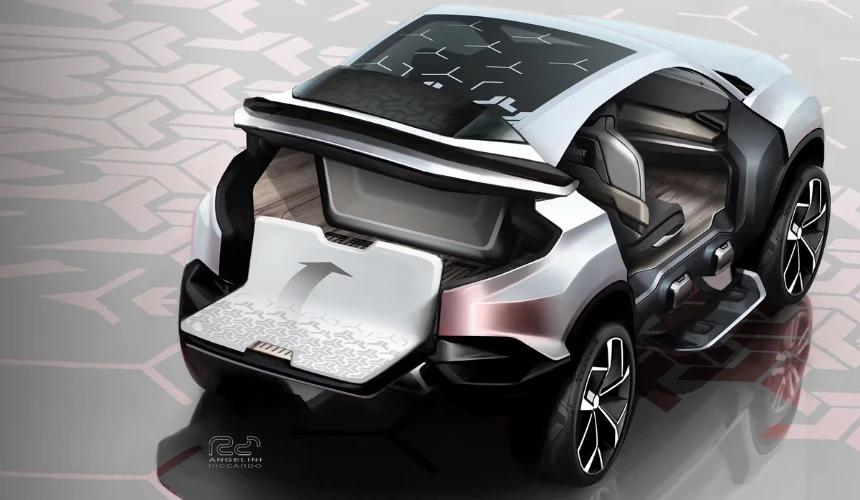Tata Motors is gearing up for a massive upgrade of its flagship SUVs. The next‑generation Harrier (codenamed Taurus) and Safari (codenamed Leo) are set to make their debut around 2027. These SUVs will come with a brand‑new modular platform supporting all‑wheel drive (AWD), advanced safety features, and both internal combustion (ICE) and electric powertrain options. This transformation is aimed at retaining Tata’s dominance in the premium SUV segment while appealing to both urban and adventure‑focused buyers.
New Flexible Platform for Harrier and Safari
The upcoming Harrier and Safari models will shift from the current OmegaArc platform (inspired by Land Rover’s D8 platform) to a next‑gen modular platform developed in-house. This flexible architecture is designed to handle multiple powertrains, including petrol, diesel, hybrid, and electric variants.
A key highlight of this platform is its ability to integrate AWD systems not just for electric versions but also for traditional ICE variants. This is significant for Safari enthusiasts who have long missed the original model’s off-road capability. The platform will also provide 100 to 200 mm of extra length, which translates to a more spacious cabin and better third‑row seating in the Safari.
Powertrain Options – Petrol, Diesel, Hybrid, and EV
The next-gen Harrier and Safari will feature a wide range of powertrain options:
- A 1.5‑litre TGDi turbo petrol engine is expected to deliver around 170 PS and 280 Nm of torque, with options for both manual and dual-clutch automatic gearboxes.
- The tried‑and‑tested 2.0‑litre Kryotec diesel engine will return in an updated avatar, producing about 170 PS and 350 Nm of torque. Tata is reportedly developing this unit in-house under a license agreement with Stellantis.
- Fully electric versions of the Harrier and Safari are also on the cards, powered by a refined version of the Harrier EV’s dual‑motor AWD system. The Harrier EV already delivers up to 313 bhp and 504 Nm torque, with a range of over 600 km on a full charge.
With these options, Tata aims to cater to a diverse set of buyers – from fuel-conscious urban drivers to enthusiasts looking for performance and off-road capability.
AWD Technology Returns
The introduction of Quad Wheel Drive (QWD) technology in both ICE and EV variants is a game‑changer. This move brings back the rugged, go-anywhere personality that defined the original Safari. Buyers can expect terrain response modes, hill descent control, and other modern off-road aids, ensuring a safer and more confident driving experience on rough terrains.
Bigger Dimensions and Upgraded Interiors
The next-gen SUVs will sport increased overall dimensions, especially for the Safari. The extra 100–200 mm length will enhance third-row comfort and boot space, addressing feedback from existing owners. Tata is also collaborating with Desay for an upgraded electronic and electrical (E&E) architecture.
Inside, the SUVs are likely to feature:
- A large touchscreen infotainment system with wireless Apple CarPlay and Android Auto.
- Advanced driver assistance systems (ADAS).
- Premium upholstery and dual-tone interior themes.
- Enhanced connectivity with OTA updates and voice-enabled controls.
Safety and Technology
Tata Motors has set high safety benchmarks with its 5‑star ratings for models like the Harrier and Punch. The upcoming Harrier and Safari will build on this legacy with:
- Multiple airbags including curtain and knee airbags.
- ABS with EBD and ESC as standard.
- Advanced ADAS features such as adaptive cruise control, lane assist, and collision warning.
- A reinforced body structure to meet future Bharat NCAP standards.
Launch Timeline and Market Strategy
Although official dates haven’t been confirmed, industry reports indicate that the Taurus (Harrier) and Leo (Safari) will debut around 2027. Tata may start teasing the models earlier, with pre-launch activities and bookings potentially opening by mid-2026, depending on final testing and readiness.
These SUVs are part of Tata’s larger strategy to introduce next-gen electric SUVs like the Safari EV and Sierra EV by 2030. The Harrier and Safari will serve as the brand’s premium offerings, bridging ICE and EV lineups.
Segment Rivals
Once launched, the next-gen Harrier and Safari will compete against heavyweights like the Mahindra XUV700, MG Hector Plus, Hyundai Alcazar, and Toyota Innova HyCross. The addition of AWD and cutting-edge hybrid and EV options could give Tata an edge in this highly competitive segment.
Why the Upgrade Matters
The upcoming models represent a bold shift in Tata’s SUV strategy:
- AWD capability brings back the Safari’s iconic off-road DNA.
- Flexible platform enables multiple powertrain options on a single architecture.
- Bigger dimensions improve passenger and cargo comfort.
- High-tech features and safety systems make it future-ready.
- Hybrid and EV options position Tata strongly in the sustainable mobility space.
Looking Forward
With the Taurus and Leo projects, Tata Motors is redefining the SUV experience for Indian buyers. The upcoming models will combine modern technology, enhanced off-road capability, and electric mobility, while retaining the practicality and style that Harrier and Safari are known for.
The 2027 launch is expected to set a new benchmark in the premium SUV category, offering something for every buyer – from conventional engine enthusiasts to those seeking greener, more advanced mobility solutions.
